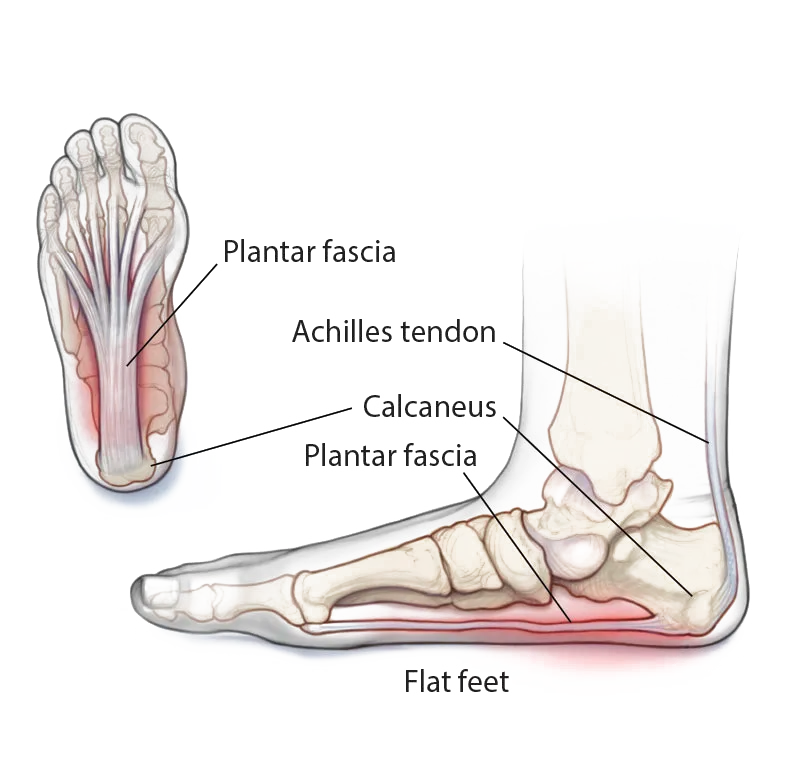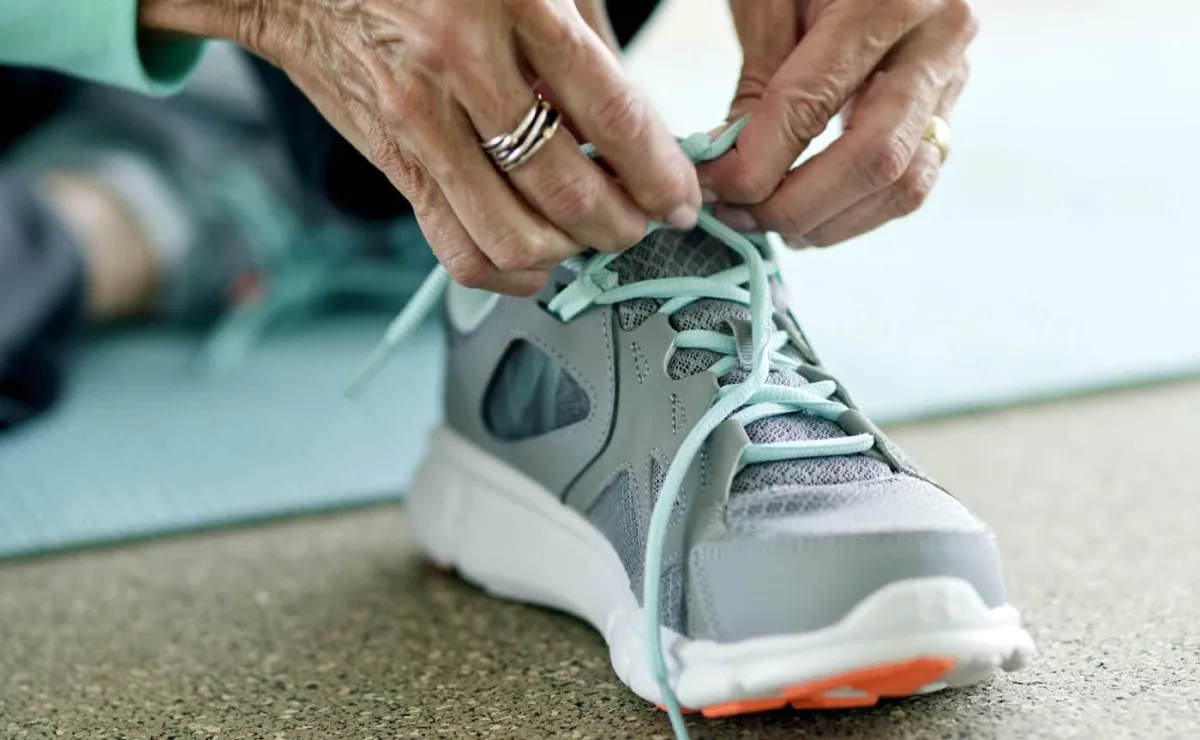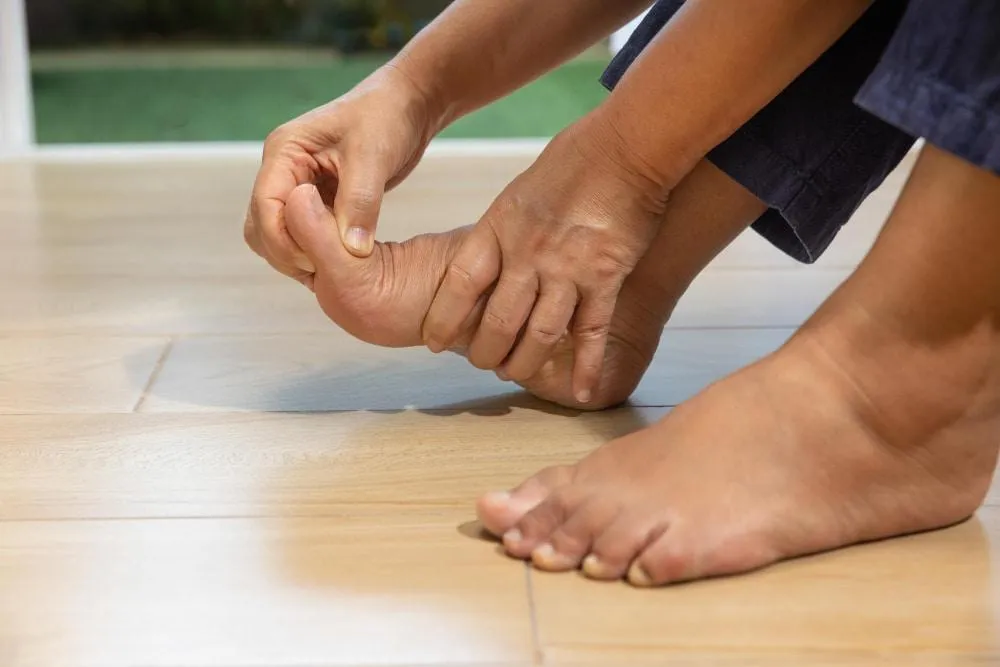PLANTAR FACIITIS
What is Plantar Fasciitis?
Plantar fasciitis is a common cause of heel pain, particularly among women over 40. It occurs when the plantar fascia, a thick band of tissue that runs across the bottom of your foot and connects your heel bone to your toes, becomes inflamed. This condition can cause sharp, stabbing pain, especially with the first steps in the morning or after periods of inactivity.

Why Does Plantar Fasciitis Occur?
Several factors contribute to the development of plantar fasciitis, including:
Age:
The risk increases with age, especially for women over 40.
Foot Mechanics:
Flat feet, a high arch, or an abnormal walking pattern can put extra stress on the plantar fascia.
Obesity:
Excess weight places added strain on the plantar fascia, especially during walking and standing.
Occupational Hazards:
Jobs that require long periods of standing or walking on hard surfaces can contribute to the onset of plantar fasciitis.
Improper Footwear:
Wearing shoes with inadequate support or cushioning can strain the plantar fascia.
Symptoms of Plantar Fasciitis
Common symptoms include:

Heel Pain
A sharp, stabbing pain in the bottom of your foot near the heel, often worse in the morning.

Pain After Activity
Pain usually increases after, rather than during, exercise or activity.

Stiffness
A feeling of tightness or stiffness in the arch of your foot.
Diagnosing Plantar Fasciitis
Persistent heel pain should be assessed by a podiatrist. A podiatrist can evaluate the symptoms and may recommend imaging tests such as X-rays or Ultrasound to rule out other conditions.
Treatment Options
Rest and Ice:
Resting your foot and applying ice can reduce inflammation and alleviate pain.
Stretching Exercises:
Regular stretching exercises for your calves and plantar fascia can help relieve symptoms.
Supportive Footwear:
Wearing shoes with good arch support and cushioning is crucial. Orthotic inserts may also be beneficial.
Physical Therapy:
A physical therapist can provide targeted exercises to strengthen the muscles in your lower leg and foot.
Night Splints:
Wearing a night splint can keep your foot in a stretched position overnight, reducing morning pain.
Injections:
In some cases, corticosteroid injections may be recommended to reduce severe inflammation.
Medications:
Nonsteroidal anti-inflammatory drugs (NSAIDs) can help reduce pain and inflammation.
Prevention Tips

Maintain a Healthy Weight
Keeping your weight in a healthy range can reduce stress on your feet.

Wear Appropriate Footwear
Choose shoes that provide good arch support and cushioning, especially if you stand or walk for extended periods.

Incorporate Foot Exercises
Regularly stretching and strengthening your foot and calf muscles can prevent plantar fasciitis.
When to See a Podiatrist
Persistent symptoms despite conservative treatment may require assessment by a podiatrist. Early intervention can prevent progression and helps you get back to your regular activities pain-free.
SERVICING BRISBANE'S WESTERN SUBURBS
Neat Feet Podiatry Care
Marshall Lane Health Clinic
8 Marshall Lane, Kenmore QLD 4069
Monday - Closed
Tuesday 9am - 5pm
Wednesday 8am - 4pm
Thursday 10am - 6pm
Friday 9am - 5pm

